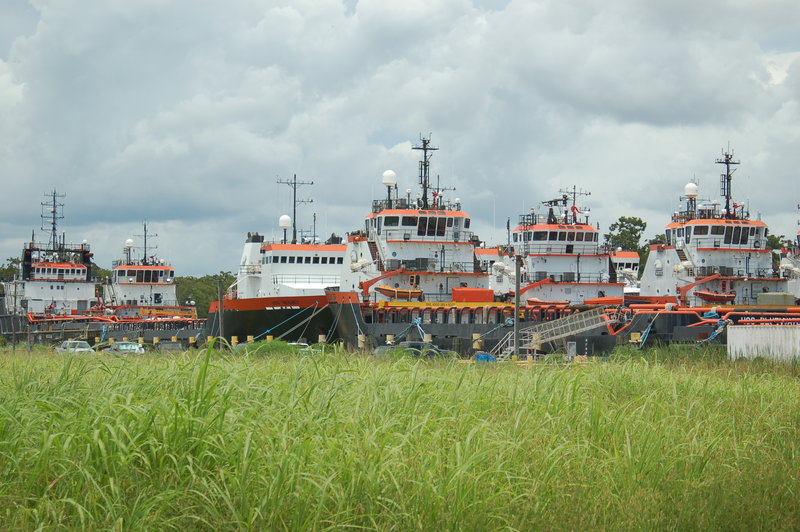For this mainly bluewater guy steeped in international shipping with a few deep-sea Jones Act vessels sprinkled in, last week's International Workboat Show (the first one I’ve attended) was like a breath of fresh air, or something like that.
When not exploring the show’s vast exhibit floor, I was able to attend a few of the conference programs. The Offshore Program session on the market for offshore service vessels (OSVs) featuring Matthew Rigdon, executive vice president and COO of New Orleans-based Jackson Offshore Operators LLC, highlighted a few of the differences in analysts’ methodologies between the workboat and bluewater markets. Both spaces exhibit the fundamental underlying tendencies towards oversupply, linked to “irrational” behavior (too much construction, failure to put capacity on the shelf, etc).

Matthew Rigdon, executive vice president and COO, Jackson Offshore Operators, at the WorkBoat Show last week. WorkBoat photo
Analysts and economists across transport markets look closely at utilization, with higher numbers meaning that demand is greater in relation to available supply. I was both amused and confused when Rigdon presented the OSV industry version of these calculations. In contrast to the deep-sea version of supply, where “laid up” vessels (including those that would take months to reactivate) are still counted as part of the fleet, the OSV version (not unique to Rigdon, by the way, it’s alive and well in the investment presentations of Hornbeck Offshore and others) takes "stacked" vessels out of the equation. Thus, when demand of approximately 45 OSVs (based on rigs deployed in the U.S. Gulf) is considered in the face of a supply of 100 domestic OSVs (netted for those who fled to international waters), a bluewater guy would compute a utilization of 45%. However, in Rigdon’s presentation, 26 stacked units are removed from the supply, yielding a utilization of something like 73% (45/100-26). Nice alchemy. Rigdon noted that, “When utilization gets to 70%, pricing power begins to return.” For tanker and dry guys, economic gurus draw vertically turning supply curves (which beget “inelasticity” aka “pricing power”) at around a more robust sounding 90%. My number crunching nitpicks aside, this was an excellent and highly informative presentation.
There are a few other differences. Life on the deep seas (and in the Excel spreadsheets of folks trying to handicap likely market turns) is actually a little more complicated by the practices of “slow steaming.” That's when the effective supply increases when vessels speed up, and decreases when vessels slow down (in response to high fuel costs, or in efforts to preemptively tilt the balance in lousy markets). That’s just the economics. We can save the low sulfur fuel burn implications for another article.
The term structure of vessel hires, as presented by Rigdon and touched on by other speakers in the program, also differed from the curves shaped by deep-sea tanker and drybulk dynamics. In the world of OSVs, Rigdon noted that day rates for longer terms may be lower than those for shorter term, in the quest to get to that $30k/day magic number that covers all costs (twice the roughly $15k current day rate).
Most of the time (six years out of seven, according to the cycle sages) drybulk and tanker rates are depressed, so that higher hires are needed by owners to lock into longer terms. In times of market euphoria, that outlying one year in the cycle, nearby per diems are above those applying across lengthier charter tenors. As the overall curve shifts up, everyone concedes that good times won’t last and owners agree to lower levels over longer charter terms, say a year, or more.




